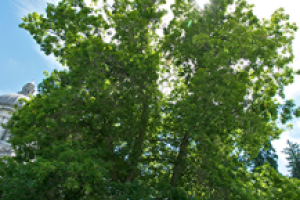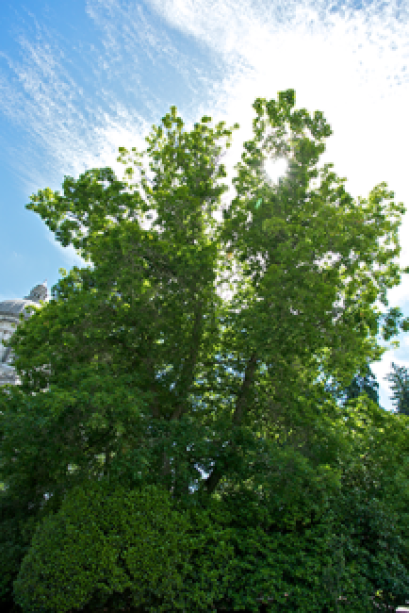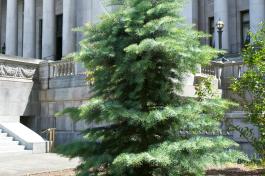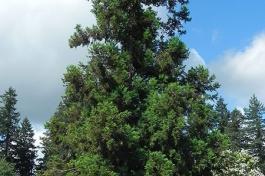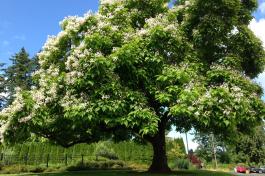Red Oak
Quercus rubra
Learn about the red oak including when and why it was planted, how to identify it, and where to find it on campus.
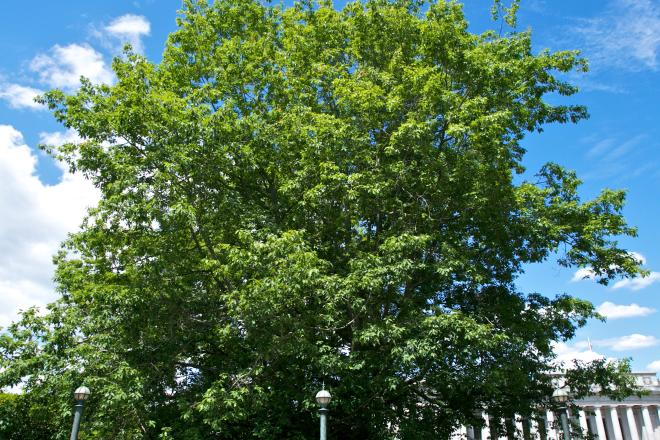
Tree Facts
Traits
- Football-shaped leaves 8-12 inches long with lobes along the margins
- Smooth, gray bark
- Produces large amounts of acorns each year
- Susceptible to bacterial leaf scorch and borer infestations
Native Range
- Midwestern United States
- Eastern United States
Story of the Tree
Two red oak trees are found northwest of the Legislative Building. These trees are part of the original Olmsted Brothers tree plan.
While many oak species grow slowly, the red oak is considered to be fast growing. It also lives long; some can reach ages well past 300 years.
Red oaks tolerate many soil types and varied conditions, making them versatile and common shade and park trees. These particular oaks at the corner of the Legislative Building provide filtered shade for other ornamental plants such as azaleas, rhododendrons, camellias, and Pieris.
The wood from red oak is also very versatile, being used for flooring, veneer, interior trim, furniture, lumber, railroad ties and fence posts.
Red oak acorns are a good source of nutrition for wildlife.


